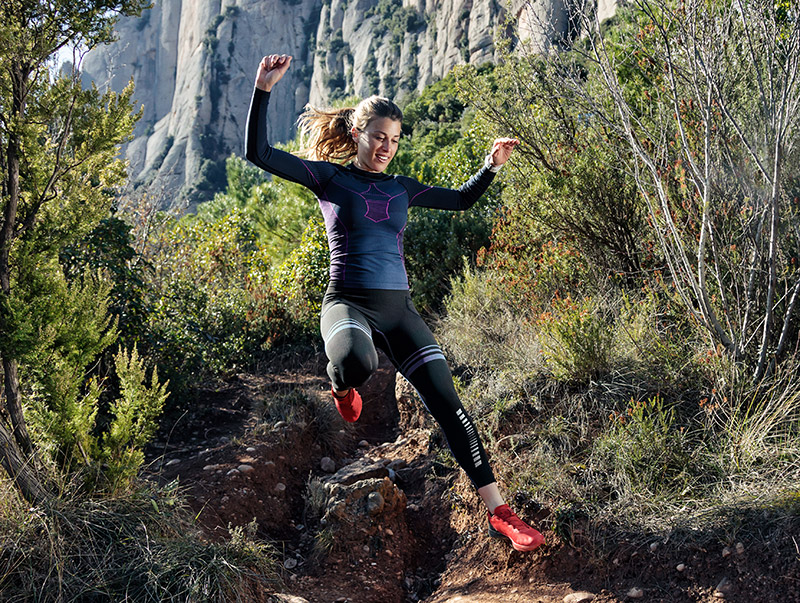Fartlek training, developed in Sweden in the 1930’s, is a Swedish term that roughly translates into “speed play”, describing a variable pace workout where you exercise based on how you feel. Fartlek is essentially unstructured interval training, alternating between slower and faster speeds.
The premise is to do whatever comes into your head with little forethought. It’s speed training at your own pace. This free-flowing run is performed for an indefinite time and over an indefinite distance. The intensity, pace, and length of the intervals vary according to how you feel – by instinct if you will. It can be the hardest workout you’ve done all week – or the easiest.12
Most commonly associated with running, fartlek training can be applied to a variety of different cardiovascular activities, including cycling, rowing, and swimming.
Why do it?
Benefits of Fartlek

Fartlek training is a great workout any runner from beginner through to advanced level, as it is versatile and easily adapted to suit fitness level. Use it to improve performance for 5K’s or marathons.
The benefits of fartlek include:
- Fun, freeing, and stimulating, and can alleviate boredom or monotony of other types of workouts. It has a ‘feel good’ factor to it, helping to increase confidence and the enjoyment of running.
- Improves speed and endurance. The variable intensity and continuous nature of fartlek stress on both the aerobic and anaerobic systems. Although there is a dearth of research into fartlek training, it most likely also raises lactate threshold, and improves fuel utilization and running economy.
Fartlek is essentially a (more fun) version of interval training, so you’ll especially enjoy it if you have artistic, creative and philosophical leanings or if you just like to have fun working out.
The Basics
How to do Fartlek

Let your senses and how hard it feels (similar to RPE) be your guide. Pick up the pace when you feel like it, for as long as you like. Then slow down and recover until you’re ready for another fast interval.3
Where. You can train on different types of terrain. Run on the flat or over rolling hills. Run on roads, trails, grass, or even on the treadmill. Run through fields or down winding paths. You can even throw in some bodyweight exercises such as push-ups and lunges, too. The clue is in the name – speed play. So make it your own and have fun. The more variety the better.
Goals. Fartlek is versatile and you can adapt your workout to suit your goal, i.e. whether you want to train to get faster (speed) or to run faster for longer (speed endurance). You can make up your fartlek completely on the fly, but you should have general idea of the basic type of Fartlek workout you’ll be doing:4
- Speed endurance. Earlier in the training cycle to increase efficiency and build resistance against fatigue at faster paces. Use: Longer intervals (about 90 seconds to 3 minutes).
- Speed. Later on in the training cycle when you’re getting ready for a race. Use: Shorter, faster intervals (up to 1 minute).
Markers. Fartlek works best when you have physical markers to use to control the different speeds at which you intend to work at. Landmarks such as park benches, street lamps, stop signs, traffic lights, buildings, tress, and mailboxes are all good ways to control your workout. You simply pick a certain bench, for example, and run hard until you reach it.
Beginners. Fartlek is basically a form of interval training, but untimed. Therefore, you need to have a sense of how hard you’re working in order to avoid over- or under training. Before moving onto this more advanced form of interval training, make sure you have a solid running base and more conventional interval training under your belt.
Different Types
Fartlek Workouts

You can perform fartleks using landmarks, by time, or a combination thereof. You can run alone or with other. Unplanned or structured. Below are some examples of the different types of fartlek.
Landmark Fartlek’s: Pick a landmark such as a street lamp or mailbox. Then run faster for three street lamps, then recover for the next three.
Structured Fartlek: Over a 6 mile run perform six 30-second fartlek pick-ups at 5K pace with full recovery between each.
Group Fartlek: Fartlek is even more fun with a partner, or in groups. Take it in turns to challenge one another. The person in charge stipulates when, how long, and how fast to execute the high- and low-intensity intervals. This unpredictability and uncertainty of what’s next keeps you on your toes, ready for anything. This simulates what happens in races and teaches you to respond to tactical moves. It trains you to run hard when you’ve got to, instead of running when you feel ready.
Remember to include a warm-up and cool down in your fartlek sessions and mix both the speed and duration of the efforts in the workout. Whatever you do, don’t forget the play and to have fun.

